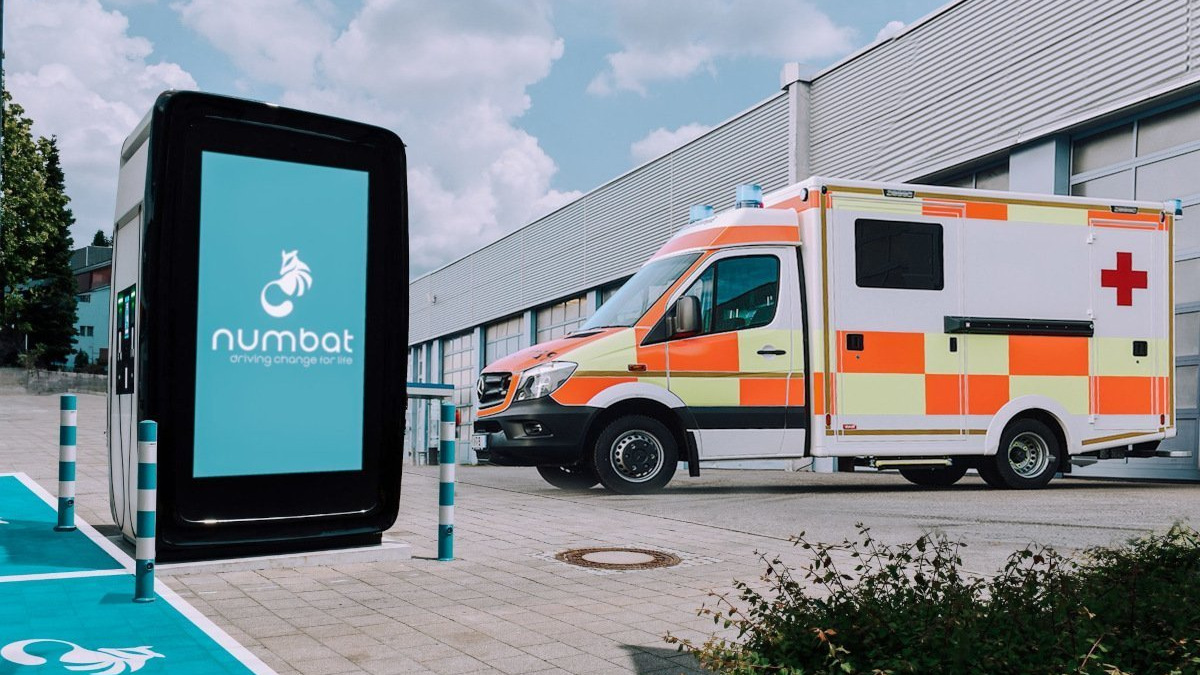Less than a year ago, German EV-DooH provider Numbat secured 140 million euros in new capital during a financing round. Now, Numbat is taking refuge under the protective umbrella of insolvency proceedings. The business case for charging infrastructure combined with DooH remains difficult – due to a sluggish market, long building permit procedures and home-grown problems.

DooH & EV-Charging: Numbat Declares Insolvency
Almost on a monthly basis, the EV-charging start-up Numbat had been announcing new location collaborations with nationwide supermarket chains and DIY stores like Norma, Feneberg, and Hagebau. However, the plan to set up hundreds of fast-charging stations with DooH screens in the short term seems to have failed for now. Unexpectedly, the Bavarian EV charging infrastructure operator has taken refuge under the bailout umbrella of insolvency proceedings. “We have made great efforts to get the company back on track, but due to the market situation and technical challenges, this could not be realized in the time available,” says Martin Schall, Numbat CEO and co-founder.
Underutilization of fast-charging stations
According to the company, the utilization of its EV fast-charging stations is still too low to sustain profitable operations in the long term. While DooH revenue from the screens integrated into the chargers was meant to be an additional income source, the primary revenue was expected to come from EV charging.
Apparently, Numbat has not yet been able to access the 140 million euros raised in autumn 2023. According to the company, the capital round was intended for a dedicated project company and were supposed to be invested into purchasing and installing fast chargers.
In addition to the lack of charging and advertising revenue, Numbat has also had to contend with technical challenges in recent months that the provider was unable to get under control in a timely manner. The approval processes for building permits and other applications were also delayed, and the rollout of the fast chargers could not be carried out within the planned time.
EV charging with DooH remains a difficult business case
Numbat is not the only one struggling with low utilization of the extremely expensive charging infrastructure and comparatively low DooH advertising revenue. The conflict of interest is inherent in the system. After all, installing EV charging stations primarily in parking lots is not always optimal in terms of DooH reach.
An additional challenge was that Numbat wanted to establish the EV DooH business model in rural areas, where DooH screens are overall very scarce and there is limited market reach.
Many charging infrastructure providers with buffer batteries attempt to profit by trading on the electricity exchange – buying electricity cheaply in times of low demand and selling it back at higher prices when demand rises. However, prices on the electricity exchanges are highly volatile and can quickly drop again.
EV charging remains dependent on subsidy models
The insolvency proceedings do not necessarily mean the end of Numbat, but the business case for DooH and EV charging will remain difficult for the foreseeable future. Meanwhile, market competitor Jolt from Munich is adapting by using a mix of externally developed fast chargers without DooH screens and its own EV chargers with displays, adjusting investments based on location potential. The industry is currently still dependent on government subsidies, which sometimes flow more or less reliably.
